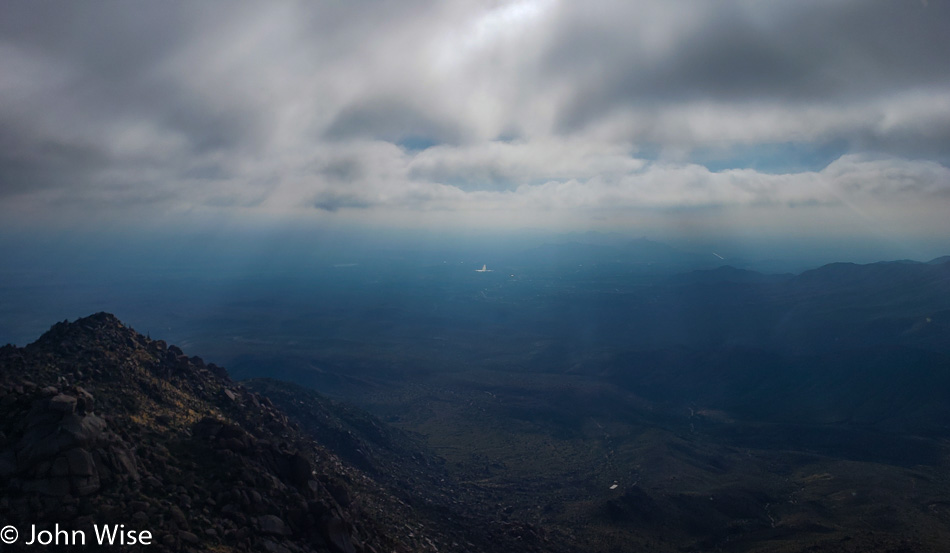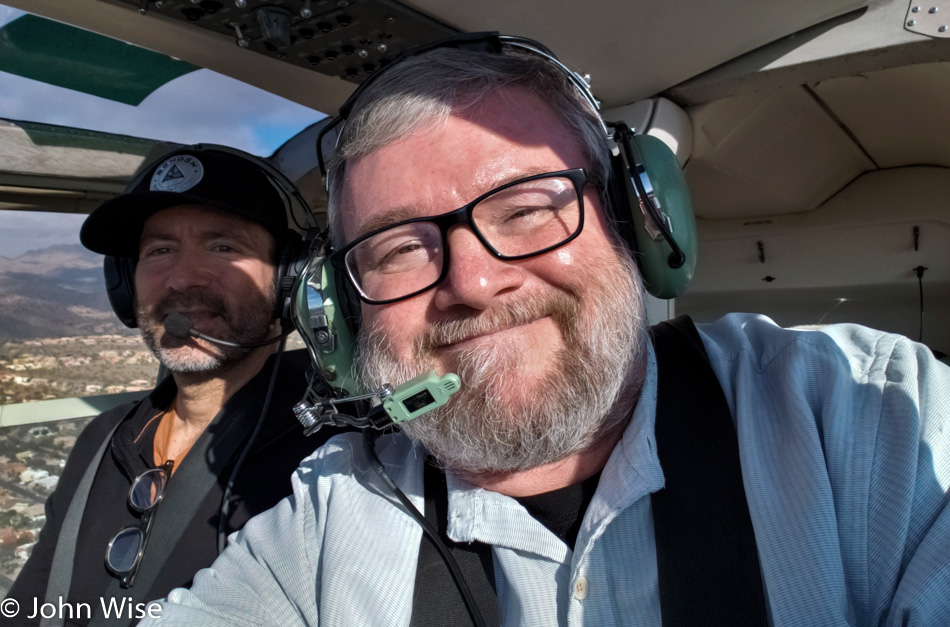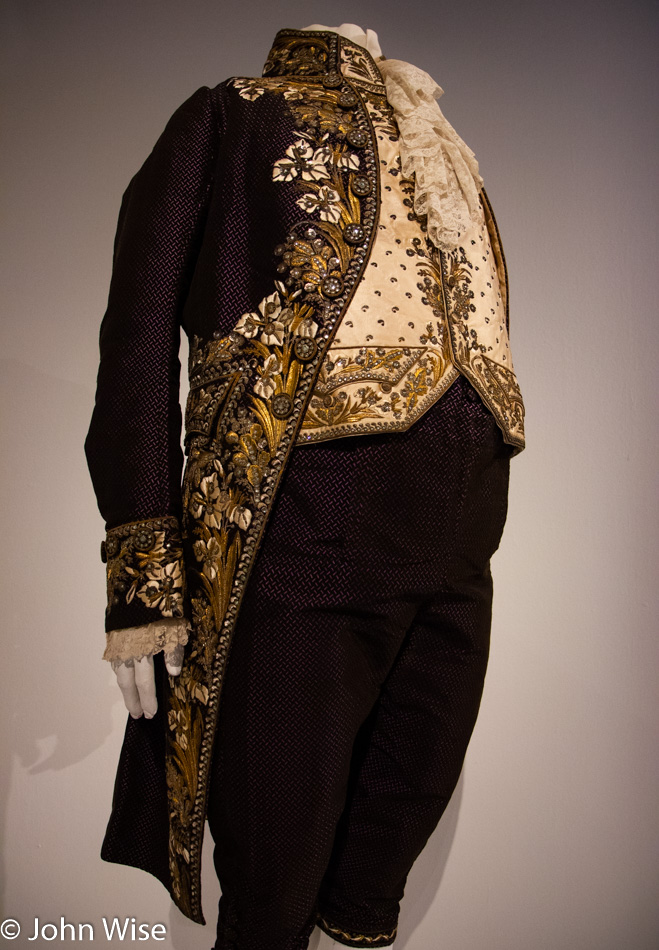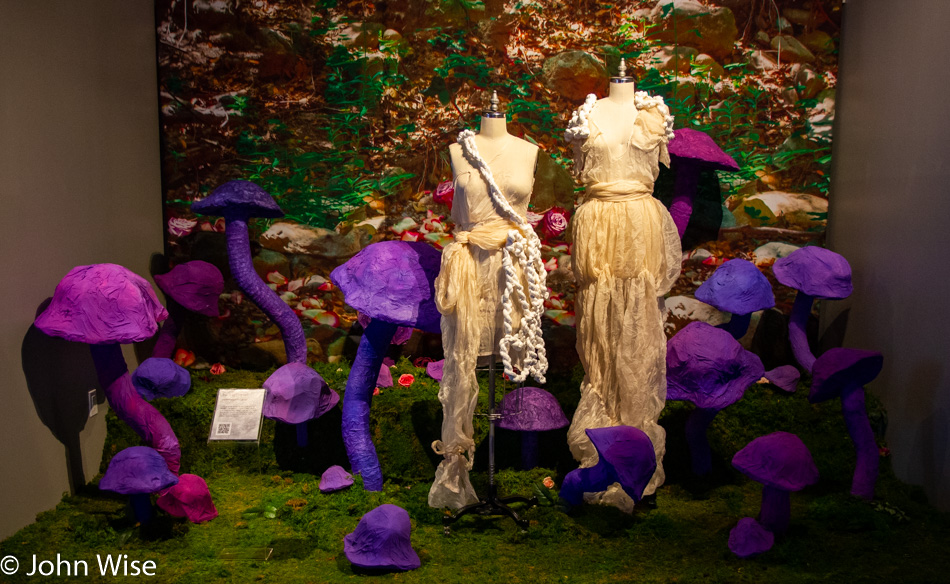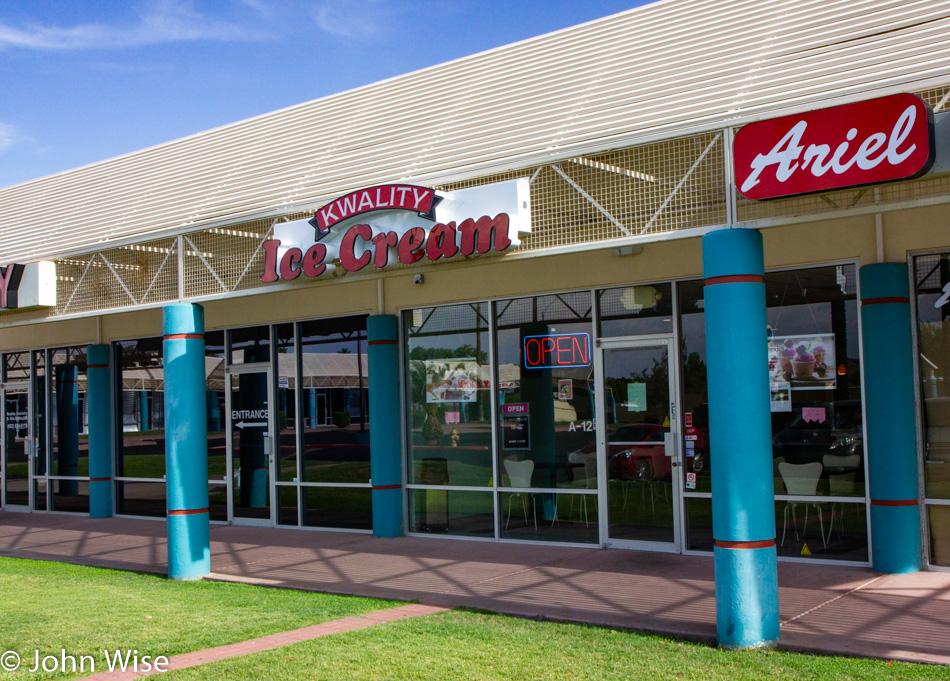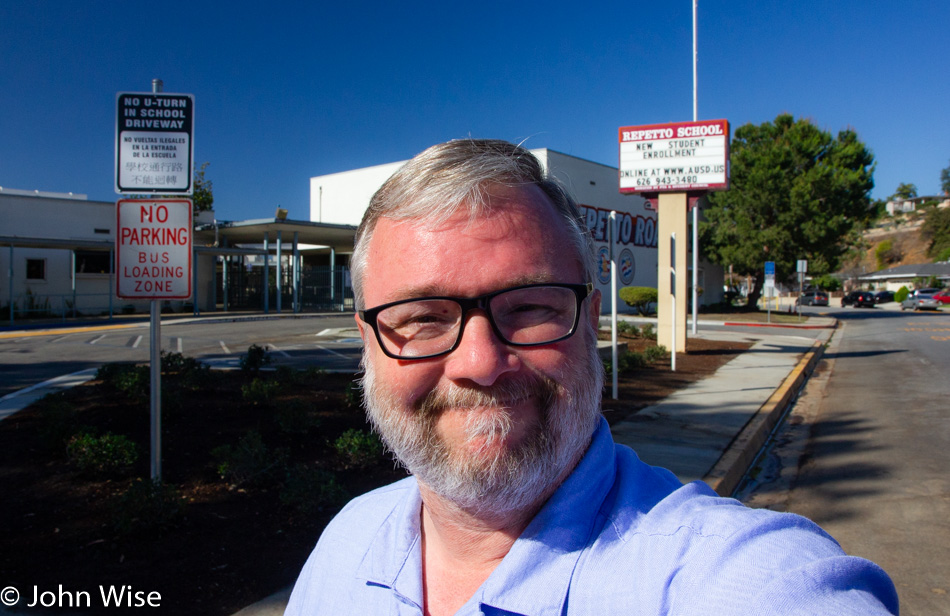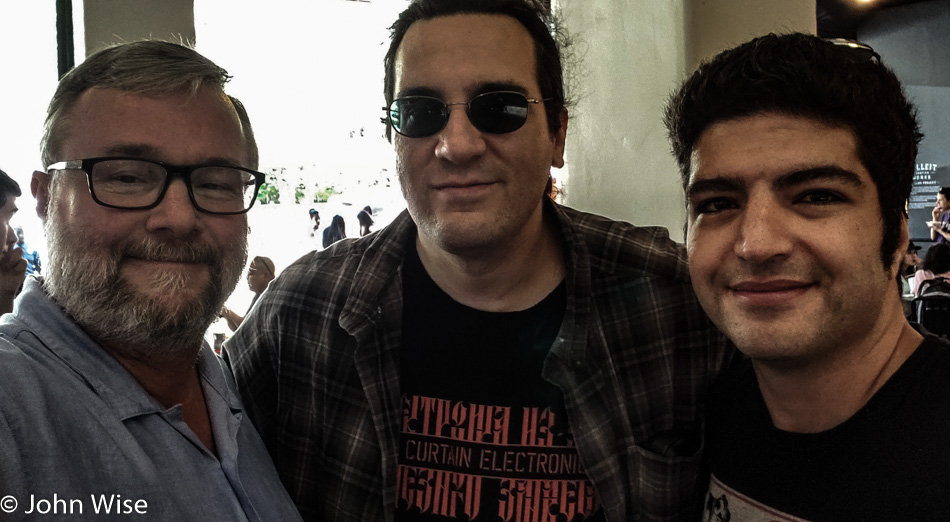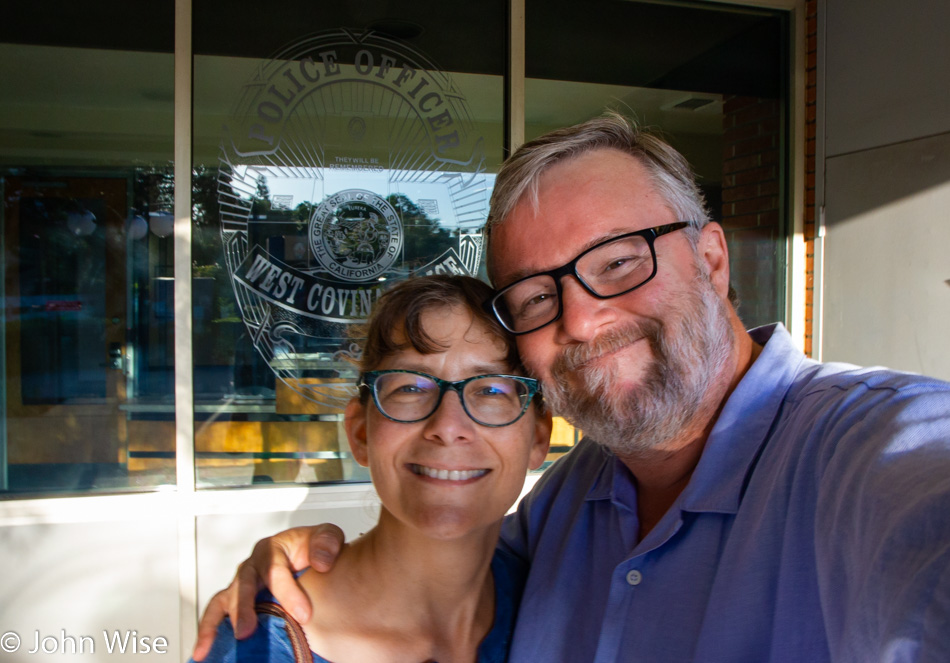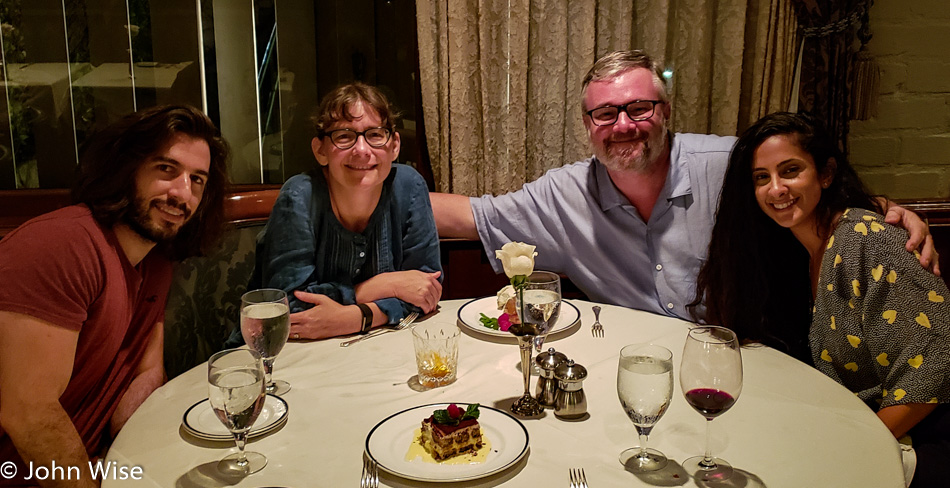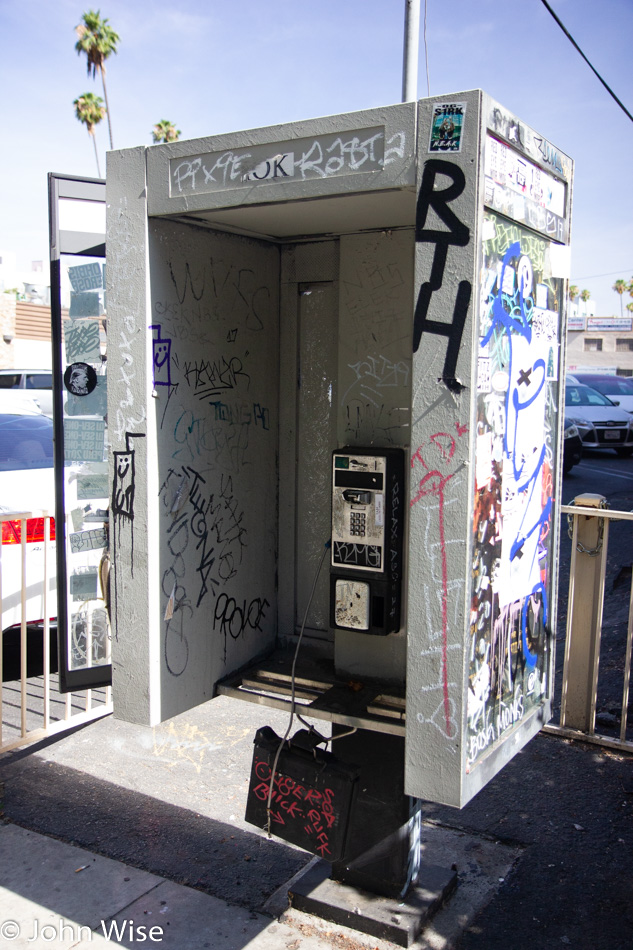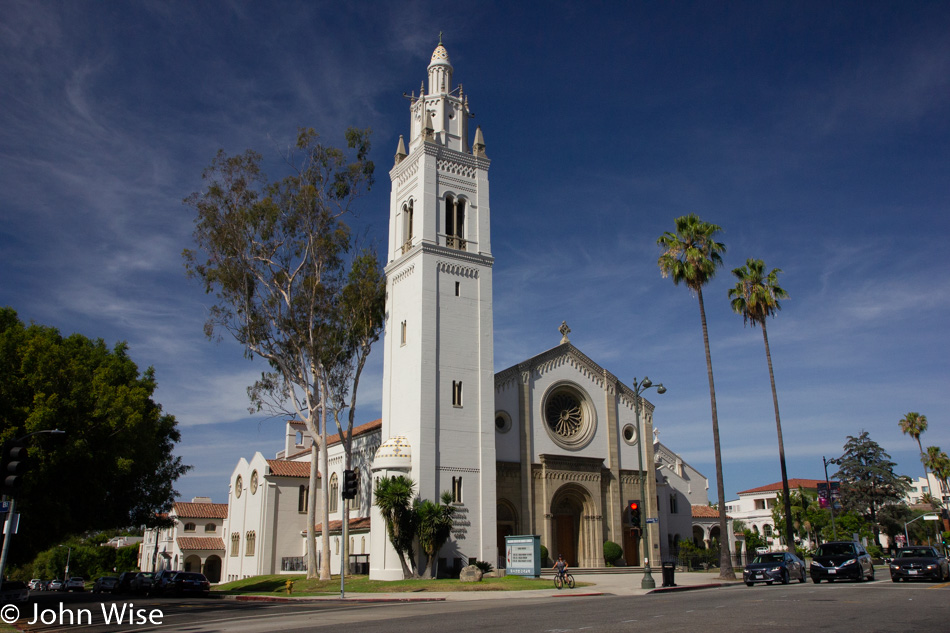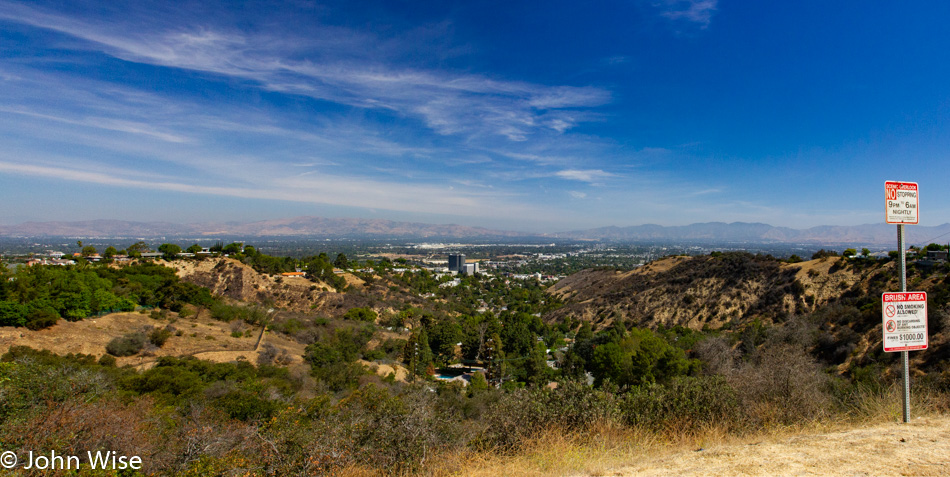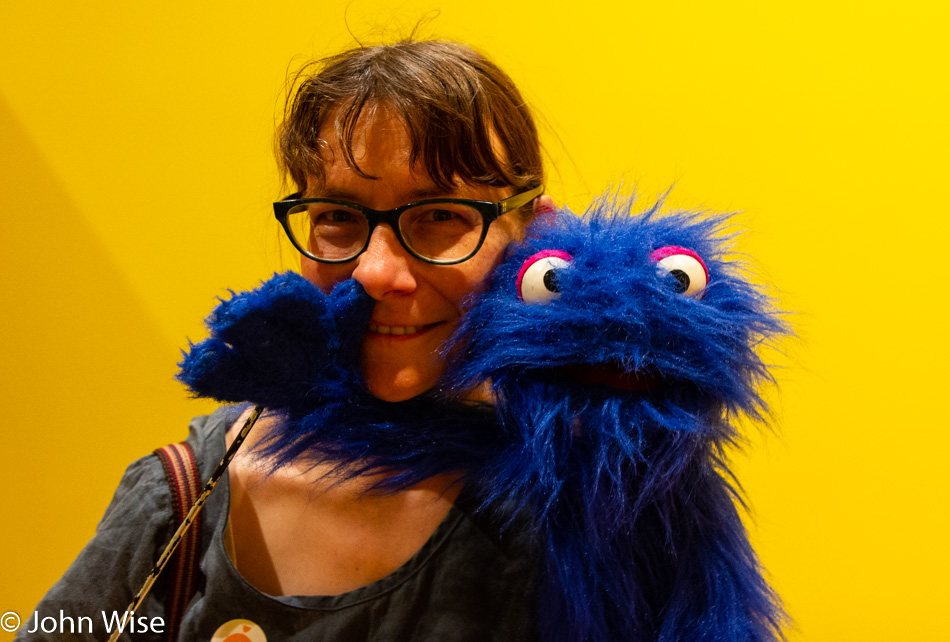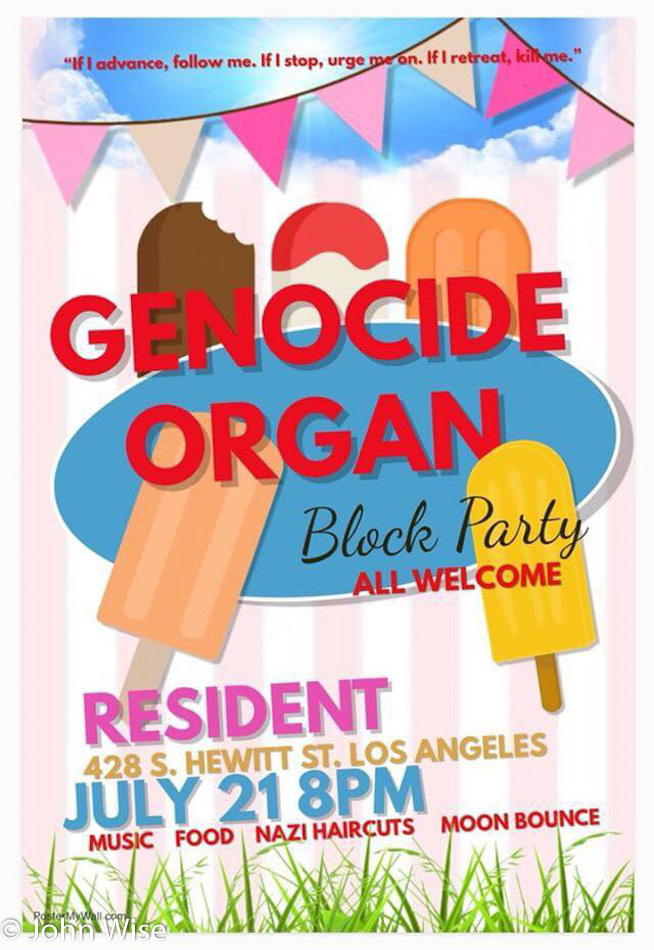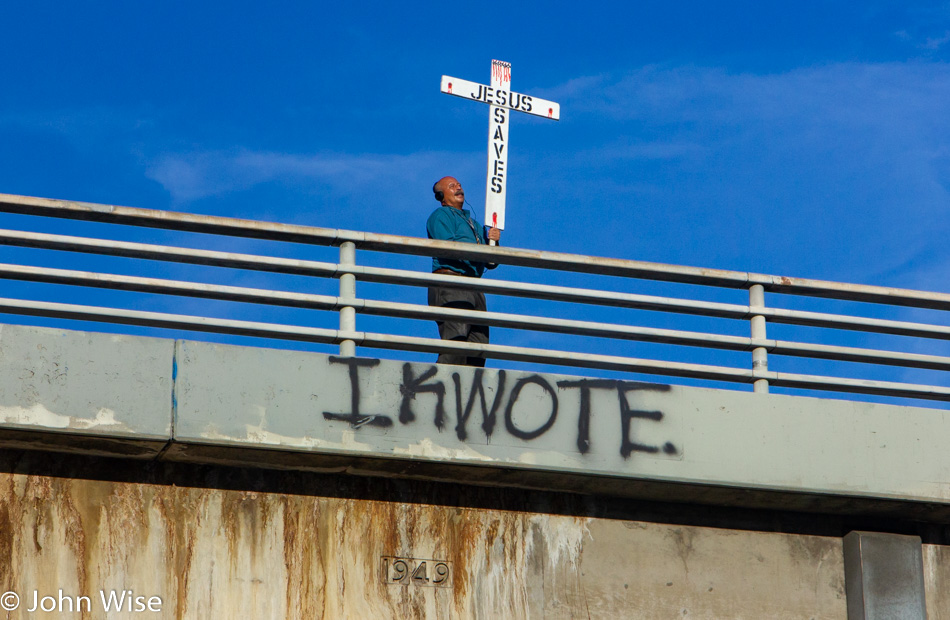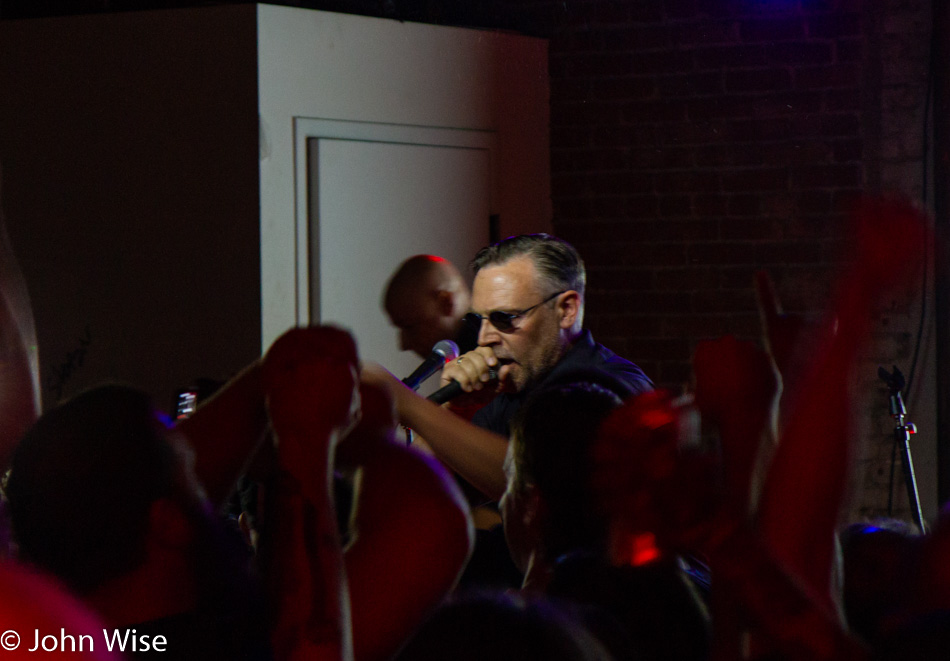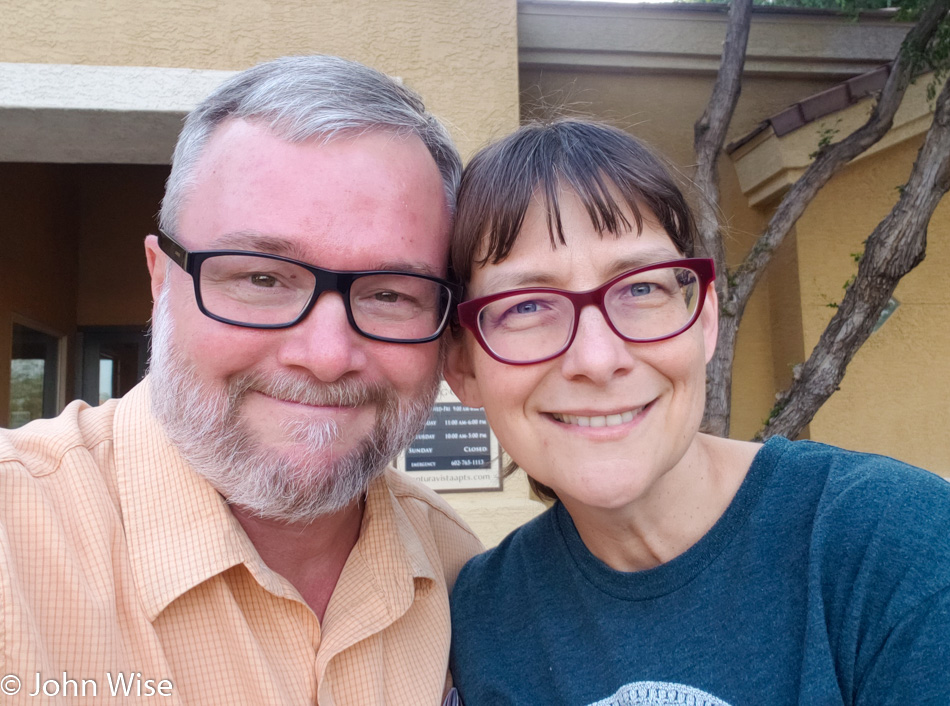
I’m at Sky Harbor Airport Terminal 4 as I write this. The flight I’m catching is taking me to Frankfurt, Germany. The selfie above was taken before my Uber driver pulled up to whisk me away. Caroline will follow my path in two weeks. You’ll learn more soon enough.
In and out of line, through security in seconds, and over to my gate when I come upon Cowboy Ciao, and I know what I’m having for dinner: the Stetson Chopped Salad. This salad is famous here in Arizona, but I thought it was gone as the location in Old Town Scottsdale is out of business. Now I’m at the gate and have minutes to go before we start boarding.
Tonight’s flight is about 11 hours non-stop to Frankfurt. I’m missing Caroline already; the separation anxiety is huge.
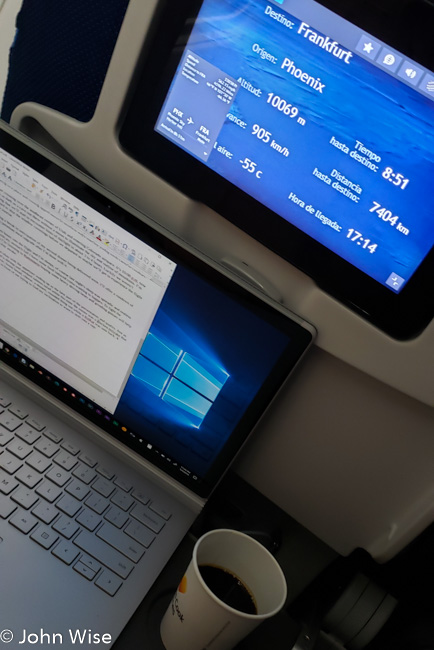
Thirty minutes out of Phoenix with only ten and a half hours to go. The flight crew said something about the evening meal and then another meal two hours before we land in Frankfurt. Seems like a late dinner and the next meal feels like an intrusion on dinner in Frankfurt. As is usual, I’m kind of pissy about being squeezed in here, though I should try to bring my focus to the incredible luck of being 33,000 feet above sea level where the air temperature eight inches to my left is -58 F. We are flying northeast at over 550 miles per hour, and I have a computer in front of me, a phone with a hundred hours of music on it in my pocket, and we successfully took off.
Words are being hard fought for, but I’m compelled to write as a large part of this journey into Europe earlier than Caroline is for me to exercise my word-smithing skills. Part of the struggle tonight is in part due to the fact that I’m writing at night and I never write at night. When we approach Frankfurt, it will be shortly after 8:00 a.m. Phoenix time, which is normally the hour I sit down to start writing, should I be so inspired. I foresee a problem with this arrangement as, by that time, I’ll likely be out of sorts from the shifted sleeping/night/day cycle that is about to happen.
I find that as I age, I’m dealing with jet lag differently than I did when I was younger. Though I might also suggest that when I was in my 20’s I didn’t much care about mental agility when I was flying over the Atlantic as I was consumed by the reality that I was either falling into Europe or returning to the United States. I worked on the adrenaline of being excited to travel; now, I look forward to the nuances of being in a place and finding appreciation in different ways than my young mind cared to consider.
We are crossing over the southeast corner of Utah and entering Colorado airspace. It’s 10:00 p.m. now so it’s as dark as a cave out there without a moon to illuminate the sky and outline of mountains. I’m guessing that we’ll start to encounter hints of daylight in about 3 to 4 hours. Luckily, we weren’t requested to shut the window coverings before we departed, so maybe we’ll get to experience the flight into the sunrise.
I’m taking a break in anticipation of my second dinner being delivered soon. I’ll offer a rundown of Condor’s premium meal upgrade after I’m done with it.
A mere two hours into the flight, I’m sleepy; of course, last night’s restless sleep, and now, with my stomach full, I have some food-induced coma waiting to happen. To fight the drowsiness, I’m listening to Rammstein, hoping some heavy driving beats and grinding guitars will help push me to stay awake.
My meal was okay, with the appetizer ending up as the best part of the presentation and quality. Just as last year, I had a shrimp and smoked salmon salad, while this time, the entree was a chicken teriyaki that was what it was. Some bread, cheese, and a dessert rounded things out while a KitKat was sent back. Coffee is now in front of me, trying to fight my inclination to drift into a nap.
In between trying to write, eat, and stay awake, I’ve been reading The Soundscape by R. Murray Schaffer. It’s too early in the book for me to offer much of an opinion yet. On the map, we are aiming for Winnipeg, while to our east is Fargo, North Dakota. I’d say more than half the passengers are asleep. The debate if I should try to get an hour’s nap is going on inside of me as I look at the global map in my seat back and see that dawn should start in about two hours. Meanwhile, Mein Herz Brennt, and so do my eyes.

Four and a half hours in this jet, and we are still over North America. The dawn arrived an hour ago, and the first rays of the sun are now bouncing off the ice crystals on my window. I don’t know who closed the shades as I was certain I was never really asleep, but whoever reached right by me to close them did so so stealthily that I never stirred. The cramp of trying to sleep has gotten the best of me, and I’m hoping Petite Meller is energetic enough to supply me with a jolt of caffeinated sounds.
Only a bit more than six hours left before we land. That sounds like forever right now. If I could leave the window shade open, I could be hopeful that the daylight would help get my brain thinking daytime thoughts, but the majority of my air companions are sound asleep.
From the book The Soundscape, “Hearing is a way of touching at a distance, and the intimacy of the first sense is fused with sociability whenever people gather to hear something special.” (page 11) This was an aha moment for me as I’d never considered just how effective music is at touching the inside and outside of the body and how at concerts, the movements of the crowd create a swarm of syncopated sensuality and community. How might I one day create music if I knew that my ultimate goal was to reach out and stroke the listener with my sounds?
The eye points outward; the ear draws inward. Is everyone looking and failing to listen? I often am drawn to looking after hearing the absurd where I’d like to recoil. It was pointed out in The Soundscape that the eye has the ability to turn off the visual by closing a flap of skin; the ear has no such mechanism. I recently bought the best earplugs I could find to turn off the outside world as the noise level of banality is becoming overwhelming. What is the negative impact of those who I’m forced to draw inward due to their proximity?

As I head into Europe, I go to listen. I go to listen to myself, though, not to listen to others. I’m going for music and instruments that make the sounds I desire to hear. I want to listen to history and listen to the whispers of the prayers that echo out of the past in the cathedrals. I do not wish to listen to the sound of war or death that has plagued the continent but to find myself at peace. The language barrier helps erect a sound fence as my primitive German skills make it easy to blur the sound of voices.
Funny that this is the first time in all of my flying years that I’ve been listening to music nearly non-stop since we departed some six hours ago. The isolation has allowed me to withdraw from the other passengers without the hope of finding some random conversation. I’m not tuning in the coughing, snoring, crying, or rustling of papers, blankets, or the seats when people use them as leverage to push their obesity out of the chair. Everyone moves by in silence; the drink and food carts glide by with bottles releasing their pressure upon opening for others, but not me.
It’s 4:45 in the morning, and the majority of passengers continue to sleep. We are under three and a half hours until we land, where all of these well-rested people will land at 5:00 in the afternoon and will likely not be very tired come 11:00 p.m. I, on the other hand, am exhausted and hope to pass out around 10:00 p.m. central European time.
Our place on the earth is approaching a point over the Atlantic south of Reykjavik, Iceland. It’s much colder out here at -80 F, and we’ve slowed down to 490 miles per hour. While we could have maintained our speed eastward, I’m guessing that arriving early is not an option when gate space is such a limited commodity at this incredibly busy airport. I peek out the window, and I’m momentarily blinded by the broad daylight being reflected off the clouds below us. Inside the plane, it is still the middle of the night. Too bad there’s not a cabin on board for those of us who’d like to transition to the day earlier.

From touchdown to customs, fetching my bag, withdrawing some Euros from an ATM to boarding a train to take me to the Frankfurt Bahnhof, where I walked out the front of that massive building and a few blocks east to check into my former house of prostitution now remodeled as a Ramada Hotel; this was all done in less than 90 minutes.
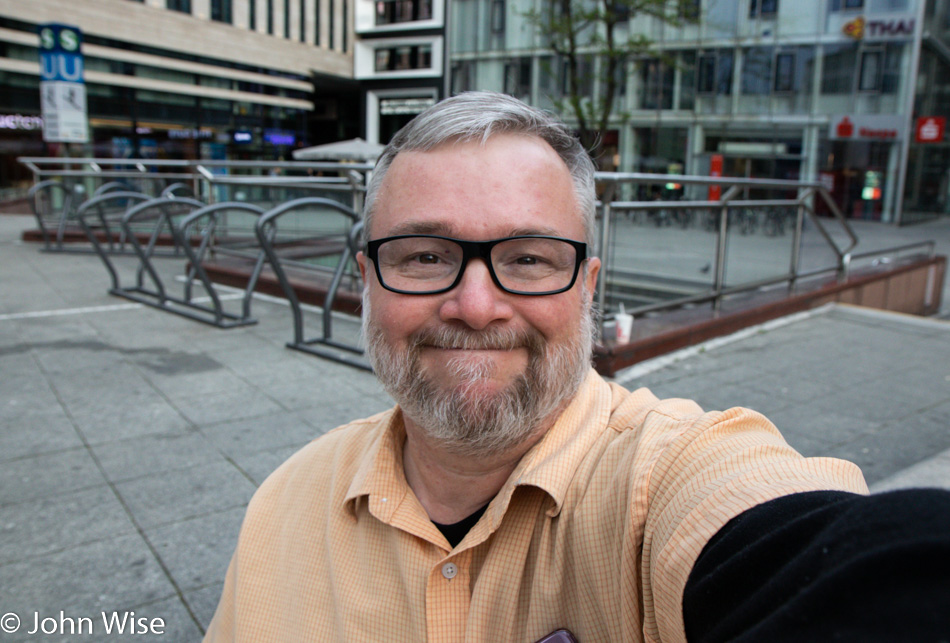
It’s 19:19 as I sit down on a wall at Hauptwache to do what I should have been doing 35 years ago: I’m writing. The punks are long gone, though a few homeless people are nearby as though they never left. It’s a bit cold, and I’m hungry, but I had to stop right here across from Hauptwache Cafe to sit on this particular wall because back when I first came to Frankfurt with the U.S. Army, I wouldn’t dare sit here. The soldiers are gone while, in some way, they were replaced by Chinese tourists.
Black is still the primary fashion choice, and it doesn’t much feel like anyone has stopped smoking, though I’m spotting more vapes than on previous visits. Strange to think that nearly 35 years ago, there was no internet, cell phones, unified Germany, the EU, a common currency, digital cameras, Starbucks, or bike-sharing services. While much has changed, I’m struck that, in many ways, nothing is really different from back then. Let me correct that; diversity is greater today.

Crazy is alive and well here, with my stroll over to Konstablerwache not failing to disappoint me. The only difference now is in regards to the number of people talking on phones with Bluetooth devices plugged discretely in their ears, allowing them to seamlessly blend in with those who are simply talking to themselves.

From the end of this shopping pedestrian zone, I turned south towards the Main River, where I walked into Sachsenhausen, intent on having some traditional German dinner. Apfelwein-Wirtschaft Fichtekränzi is amazing, but tonight, it is amazingly busy, and impossible to get a table. Next door is Gaststätte Atschel, who won’t be able to seat me this evening, even though I’m just one person. Lucky me, as Ebbelwoi Unser said, they’d squeeze me in. Fifteen minutes later, I’m at a table with eight other diners.
Handkäs mit Musik is a Frankfurt tradition of a cheese that is marinated in vinegar and oil and served topped with onions and caraway seeds. The “joke” of “mit Musik” is that by eating this concoction, you’ll be making music later. While I was eating, an old friend answered yesterday’s question I texted him about restaurants to eat near the main train station; he’s too late on his reply for me to benefit from his answer. He’s surprised when I tell him where I am in Sachsenhausen and we agree to meet after I finish.
My main course was two schnitzel cutlets served with Bratkartoffeln (fried potatoes) and, of course, green sauce. Better known as Frankfurter Grüne Soße, this regional treat has grown in cult status, with festivals now celebrating it; I cannot come to this city without indulging. I hope that I will never grow bored of eating here.

The friend who contacted me was Olaf Finkbeiner. He’d asked if I would arrive at our meeting point in Elbestrasse by train or taxi; I told him I would be walking. He thought me crazy, but to me, Frankfurt is a tiny place easily walkable. A sunset walk along the Main was far more interesting on my first evening here than getting on a subway. Along the way, Olaf let me know that Plank Bar was closed; he’d forgotten it was Sunday night.
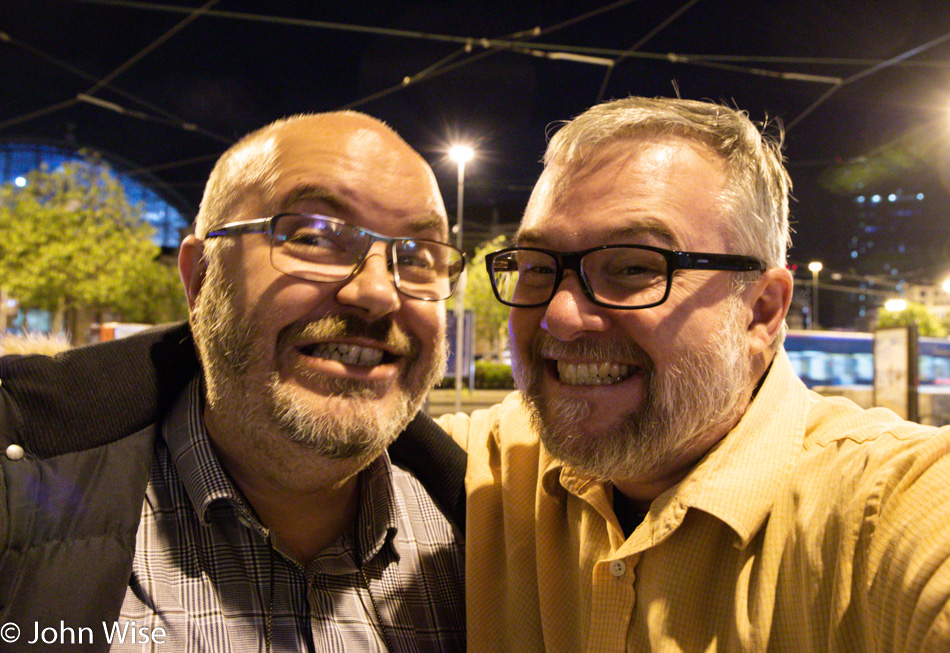
We walked back towards the Hauptbahnhof and went to O’Reilly’s Irish Pub, which might not have been the best place to meet, but it was open. Crowded and loud were the negatives; meeting with Olaf after not seeing him for the past five years made up for any inconvenience. Talking about technology and politics for the next couple of hours went by incredibly quickly before I cajoled this guy into stopping for a selfie to prove to Caroline that Olaf and I had indeed met. We agreed to get together once again after Caroline arrives, and with that, I dragged my jetlagged and fatiguing self back to my former whore house, where once again, I was paying for the opportunity to spend some time in one of these tiny rooms.

